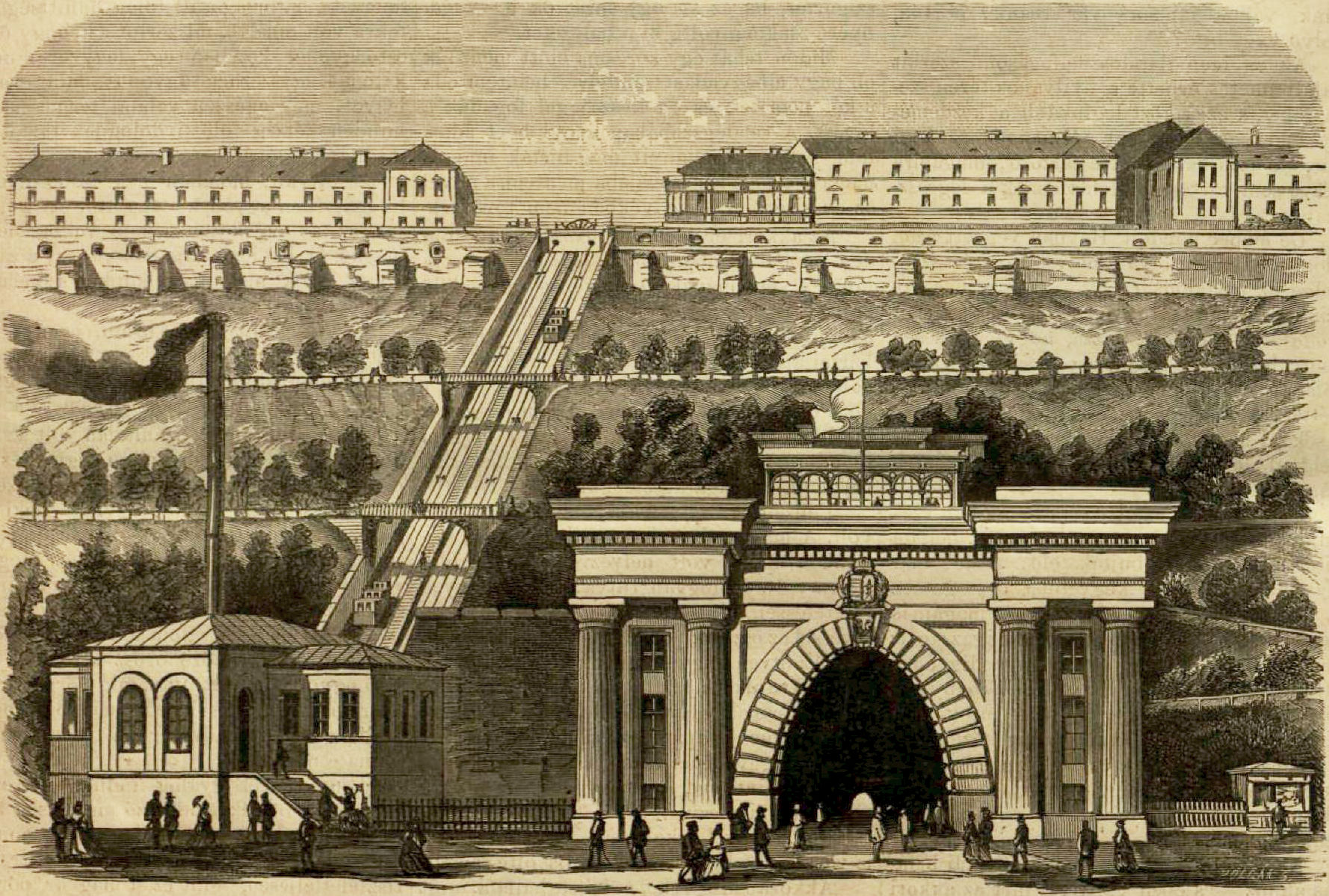Count Ödön Széchenyi, son of the ‘Greatest Hungarian’ István Széchenyi of Chain Bridge fame, attended the Paris World Fair in 1867, where he encountered the idea of a lift scaling a hill. The first such structure had begun to operate just a few years earlier, in Lyon. The young Széchenyi liked this peculiar type of a railway so much, he suggested one should be built here in the Hungarian capital as well, transporting passengers to and from lofty Buda Castle. Construction began in 1868, and the Buda Castle Funicular, then known as the Buda Hill Railway, was opened to the public on 2 March 1870.
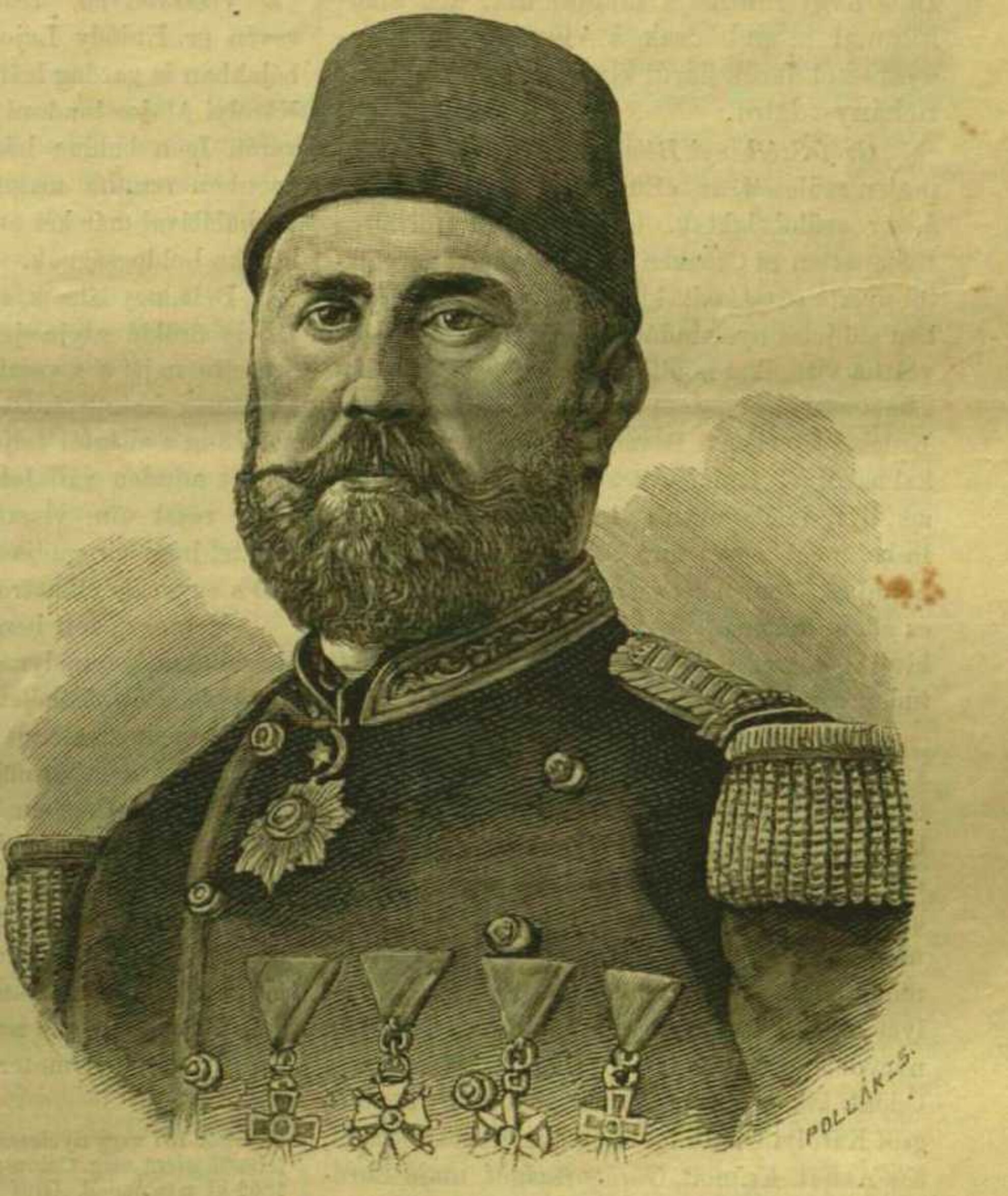
Despite his enthusiasm, he didn’t find too much support at first. He proposed that it should be built on the side of the Castle Hill closest to Chain Bridge, not only to save the time and effort of going up, but also to benefit and give a sense of comfort to nearby residents. The innovative count and his proposal were scoffed by many, some believing that even if the funicular were built, people wouldn’t use it out of fear for their safety.
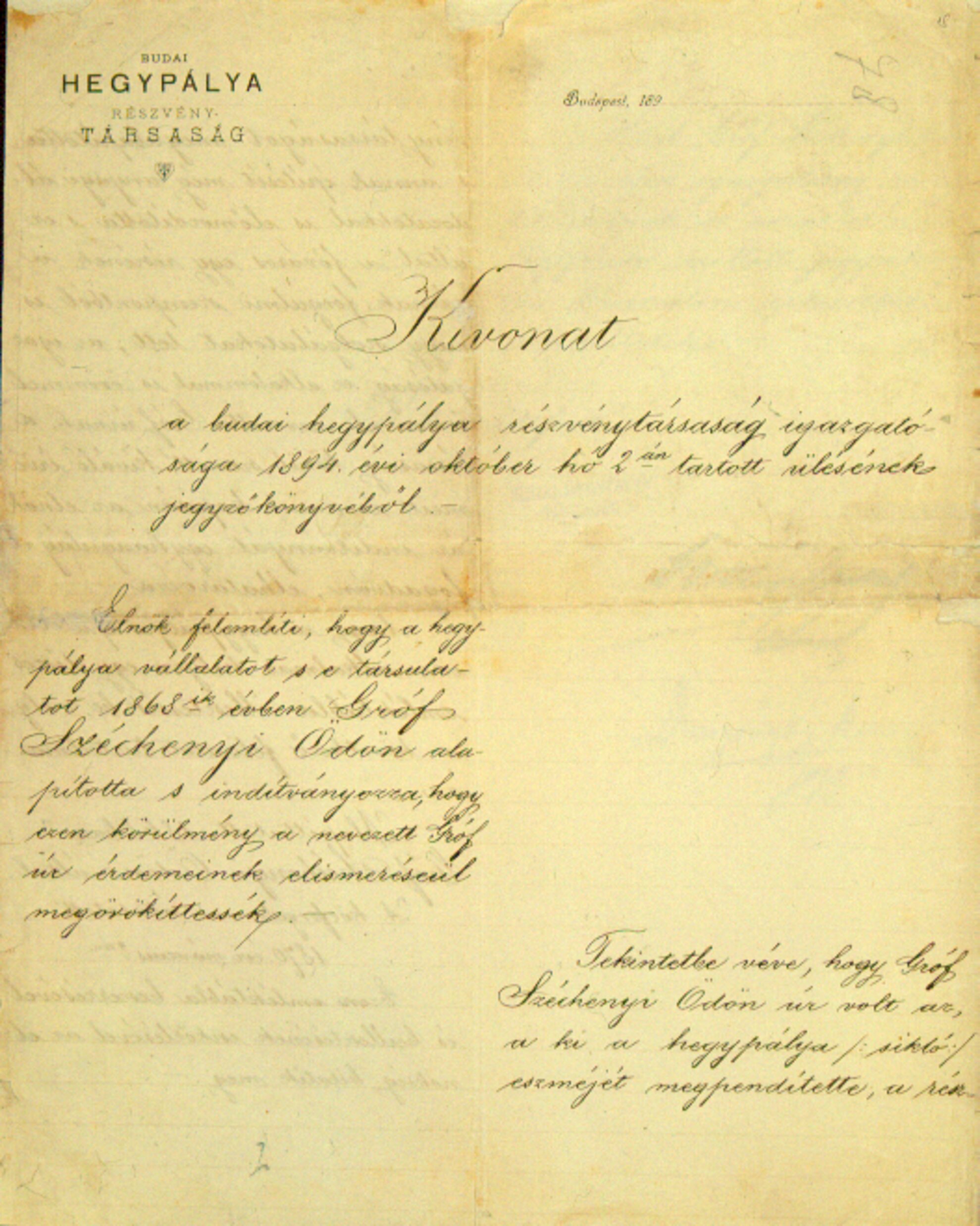
But Ödön didn’t let himself be pushed aside. As a tenacious man, he kept trying until he obtained all of the necessary subsidies and permits. By 25 May 1868, everything was ready to go and construction could begin. The work took nearly two years, and was definitely not smooth. The rails were embedded into the ground with great difficulty, and the lifting devices had to be rethought at one point, as the steam engine operating the funicular could only be set up at the bottom of the hill.
The long-awaited opening day arrived on 2 March 1870. As the second such structure in all of Europe, the Buda Hill Railway or the sikló first received a 40-year permit. A passenger service had already started a few days before as test runs, completely free of charge until the official opening. Doubting and criticising voices all but disappeared after the funicular was completed, and the new structure was widely praised in the media, too.
Powered by a steam engine at the time, the funicular was such a huge success that several smaller copies were planned across the Buda hills, but were never undertaken due to lack of funding.
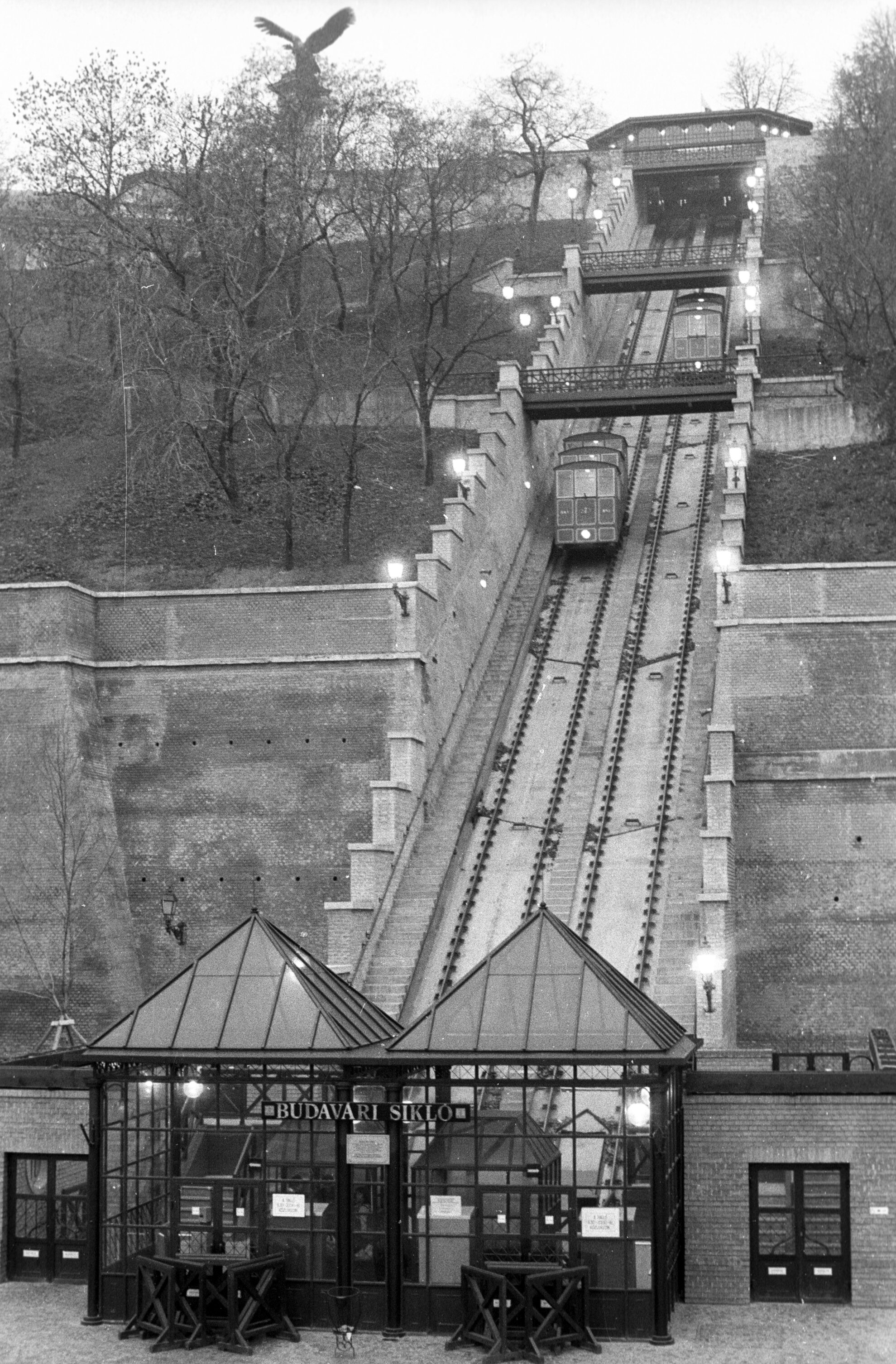
The first plans for the sikló were laid down by Ödön Jaruszek then handed over to Henrik Wolfahrt. He modified the original design quite a bit, and also directed the physical construction of the funicular. The length of the normal-gauge, 30-degree slope, with a 50-metre elevation, became 95 metres, with an impressive hall built at the lower end of the tracks, storing equipment such as the steam engine.
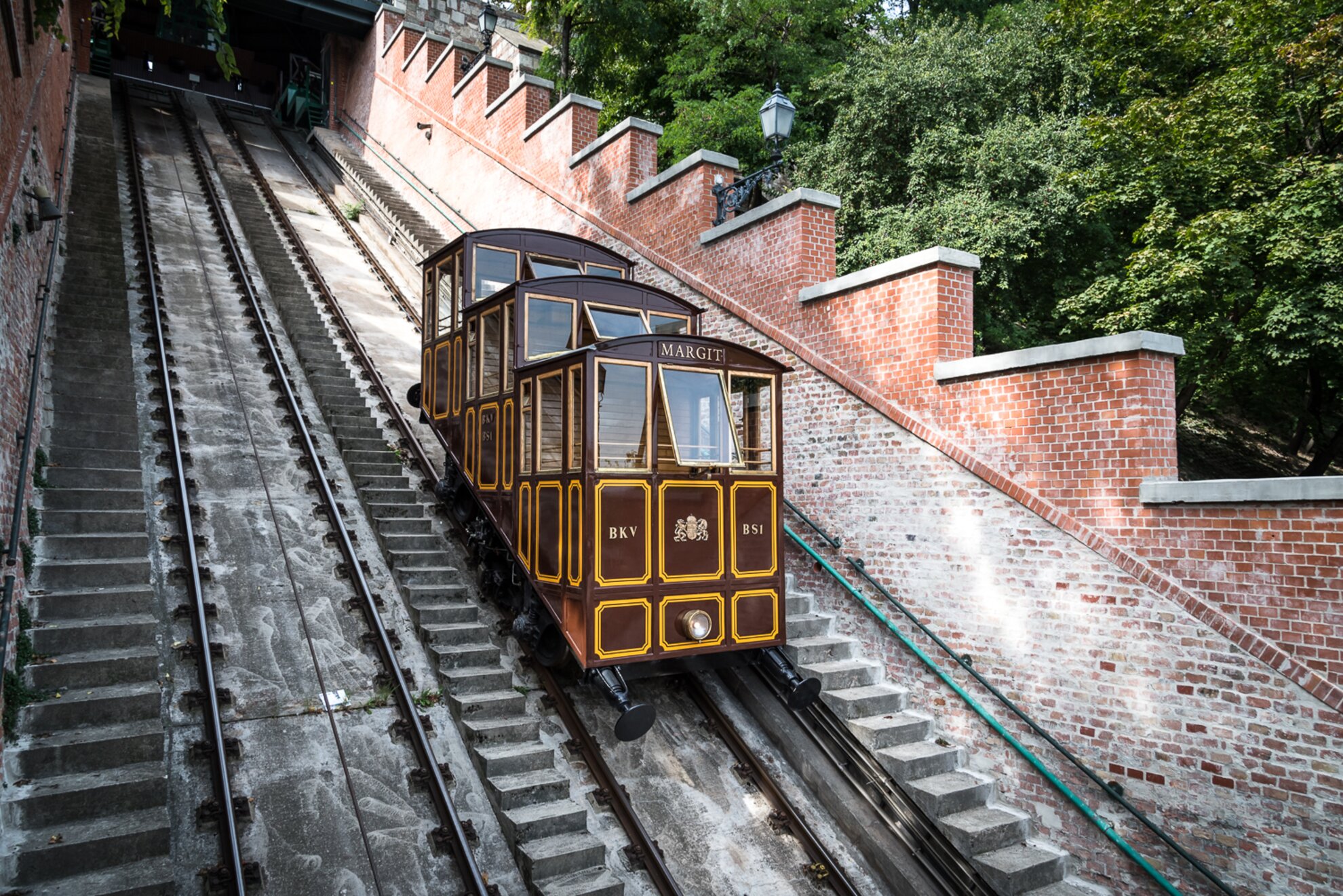
The funicular’s popularity was enormous. Three years after its opening, it attracted half a million annual passengers. The regular bus service up to the castle, launched in the late 1920s, made no dent in the visitor figures, either.
The funicular was first operated by an association called Budai Hegypálya, and then given to the City of Budapest in 1920. The local transport authority, Budapest Székesfőváros Közlekedési Rt (BSzKRt), assumed control in 1932, operating it until 1944, when the Siege of Budapest caused considerable damage to the structure.
This was followed by difficult decades. The Communist régime regarded the funicular as a vain symbol of the past, so instead of rebuilding it, they simply swept away its remains. The winds of change could be felt by 1960s and 1970s, with several plans intended to renovate the area and the funicular infrastructure. Some were less than ideal – for example, replacing the whole structure with a gigantic escalator. Finally, in the early 1980s, Budapest’s main public transport operator, BKV, carried out the renovation, and the funicular was reopened in June 1986.
It has been working effortlessly ever since, now carrying between 500,000 and one million passengers a year, most of whom are tourists. Its two carriages – which actually have names, Gellért and Margit – were renovated in 2009. After its reopening in the 1980s, it travelled at three metres per second but as passengers found this too fast, this was reduced to 1.5 m/s soon afterwards, the speed it maintains today.

